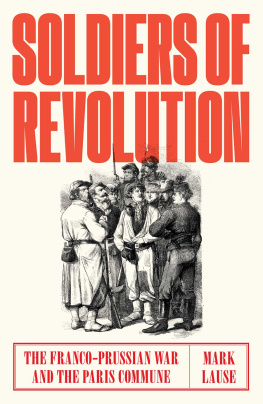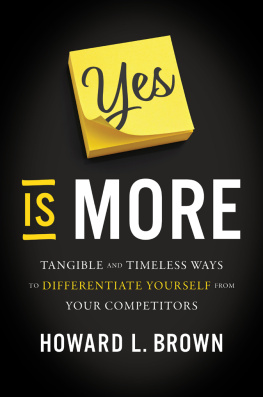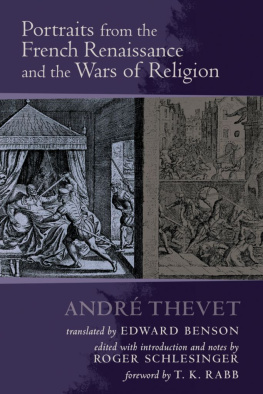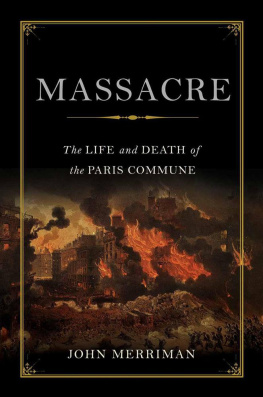ACKNOWLEDGMENTS
Intellectual debts are even harder to repay than professional ones. What is the currency of remuneration for intellectual stimulation? Outside of reference notes, I can think only of acknowledgments such as these and hope that they have not lost their value due to steady inflation. Reading Charles Taylor, Sources of the Self: The Making of Modern Identity (1989) for intensely personal reasons in the early 1990s planted an intellectual seed. That seed received little attention and no academic watering, however, until more than a decade later, that is, until I read Dror Wahrman, The Making of the Modern Self: Identity and Culture in Eighteenth-Century England (2004). At the time, I was finishing another book and was starting to work on visual representations of revolutionary violence in the period I had just written about, that is, the first decade after the overthrow of Robespierre in July 1794. My initial interest was in discerning how images that served the purposes of propaganda gradually gave way to more contextualized, and thus more historical, alternatives. The rare and beautiful Tableax historiques de la Rvolution franaise in the complete edition of 1804, which I discovered at the Carl A. Kroch Library at Cornell University, offered ideal material for such a project. It also led me to the superb study of an earlier set of historicizing prints from the French wars of religion, Philip Benedict, Graphic History: The Wars, Massacres and Troubles of Tortorel and Perrissin (2007). Extending my search for similar work on later periods led me to reread Robert Gildea, The Past in French History (1996) where I found new meaning in his interpretation of the relationship between the Paris Commune and the formation of the working class in France. Finally, Jeffrey C. Alexander, Ron Eyerman, Bernhard Giesen, Neil J. Smelser, and Piotr Sztompka, Cultural Trauma and Collective Identity (2004) convinced me that the concept of psychological trauma offered a powerful analogy for collective responses to major episodes of human suffering, notably events of mass violence. These works are in no way responsible for the heuristic framework adopted for this project, but they should be recognized for inspiring scholarly creativity and a search for better understanding.
Essential inspiration also came from interacting with colleagues, especially in the context of presenting my evidence and interpretations publicly. I am deeply grateful, therefore, to the kind and generous colleagues who invited me to present papers at (in order of appearance) York University (Canada), the University of York (United Kingdom), the University of Connecticut, Vanderbilt University, Cornell University, the Center for Medieval and Renaissance Studies at Binghamton UniversitySUNY, the University at BuffaloSUNY, Brandeis University, the University of Leicester, Princeton University, and the Smithsonian Institution, Washington, D.C. Powerful intellectual stimulation also came from presenting papers at conferences, notably at regular conferences such as the Biennial George Rud Conference, the Consortium on the Revolutionary Era, the Society for the Study of French History, the Society of French Historical Studies, and the Western Society for French History. The personal and professional sustenance provided by such gatherings would be hard to overstate. Though I could not name all of the people who gave insightful commentaries, asked provocative questions, or offered perspicacious remarks, they had a powerful collective effect on this project. Others who were even more engaged I am able to name: David Bell, Jeffrey Freedman, Yair Mintzker, and Liana Vardi helpfully read at least one chapter each, as did about a score of participants in the Old Regime Group in Washington, D.C.; Steven Englund and Jonathan Karp both graciously read the full manuscript in a late draft and engaged in prolonged discussion of it. Readers reports also proved highly valuable in helping to clarify both my aims and my claims. Diane Butler has been even more closely involved with this book. Not only did she help to infuse the project with the expertise of an art historian, she listened carefully to innumerable passages that had little or nothing to do with images. She also patiently endured tedious obsessions, understanding that scholars must pick a few nits from time to time.
Professional support also takes financial forms, and my research has benefited greatly from a series of research grants, supplemental travel awards, and a publication subvention (to cover the cost of the leaded-pages insert) from the Deans Office of the Harpur College of Arts and Sciences. Binghamton University also granted me two leaves for professional development. These leaves were especially useful because they each came attached to a semester of leave after three-year terms as chair of the history department; these two well-spaced years of release from academic duties prevented this project from falling victim to other commitments. Being able to combine money with time allowed me to consult numerous libraries and archives where staff members repeatedly offered helpful expertise. I am especially grateful to Ms. Vronique Fau-Vincenti of the Muse dhistoire vivante (Montreuil, France) who supplied me with precisely the images I needed after a planned trip to Paris had to be unexpectedly canceled. Finally, Marc Newton, of the Department of Art and Design at Binghamton University, expertly adjusted all the digital images that I had taken myself in preparation for their publication herein.
INTRODUCTION
A Discourse on Method
This book investigates personal and collective responses to four periods of mass violence in France from the sixteenth to the nineteenth centuries. In particular, it tries to assess how representations of those events influenced collective identities and the growing salience of the self. The recounting of the actual events will be limited to those elements deemed most relevant to an exploration of the psychological impact they had on the people who lived through them. Rather than try to recover the experiences of victims of violence, however, the purpose is to examine how suffering due to mass violence was communicated to individuals who were not directly victimized and to explore the broader cultural reactions that such representations generated. Special attention is paid to visual images. The four incidents of mass violence chosen for this study varied considerably in form and scope. They took place during the wars of religion (especially the Saint Bartholomews Day massacres of 1572), the Fronde (especially the crisis of 1652 around Paris), the French Revolution (especially the Reign of Terror of 179394), and the Paris Commune (especially the Bloody Week of May 1871). In each case, the focus is on the earliest textual and visual representations of mass violence and personal suffering, notably those conveyed by novel media ranging from printed engravings and mass-produced pamphlets to illustrated newspapers and collodion photography. These four episodes had profound effects in their own right, but they also serve as proxies for other incidents of civil strife during these three centuries.
Due to their sheer intensity, incidents of mass violence offer promising subject matter for an analysis of psychological responses. Historians are generally wary of engaging psychology per se. They seek to explain the actions of individuals in the past in terms of their motives and passions, but tend to be uncomfortable with behavioral models. For a time, some scholars thought that psychohistory could offer new biographical insights, that is, until Freudian schemas fell from favor. However, a recent interest in the history of emotions has encouraged some historians to expand Such methodological adventurism has inspired the approach of this book, which seeks more to explore and explain than to argue or prove. This book assumes that the emergence of a modern, more interiorized self between the sixteenth and twentieth centuries has been sufficiently proven, but not adequately explained. Therefore, it is hoped that this book will add to that understanding by exploring responses to mass violence and suggesting that these should be included among the many forces that helped to make the self a more prominent part of personal identity. This work is avowedly teleological because there is overwhelming evidence that over the past several centuries in the West, individuals have increasingly based social relationships on forms of personal agency and subjectivity that derive from a more autonomous, interiorized sense of self. Additionally, there is an implicit claim: that periods of mass violence generated certain cultural changes that interacted reflexively with evolutionary changes in the self. Such an approach suggests that during such events, many individuals who did not directly experience the violence reacted to representations of the suffering of others in ways that fostered a more introspective and psychologically articulated sense of individual identity.










